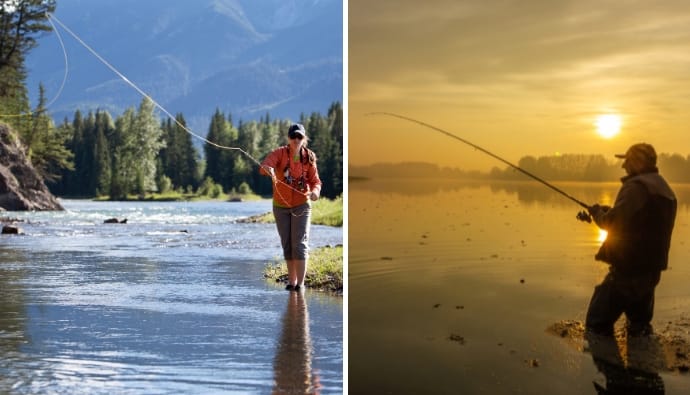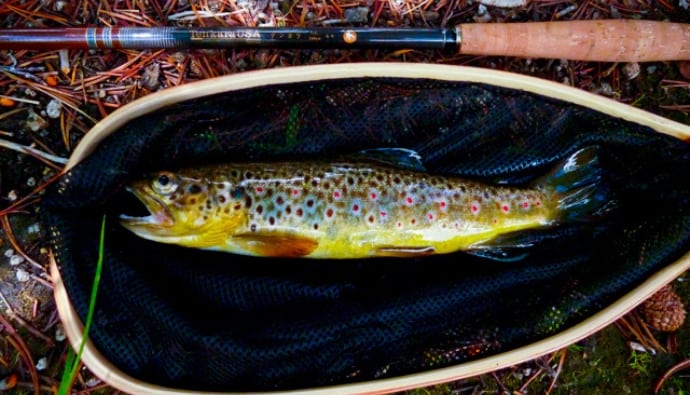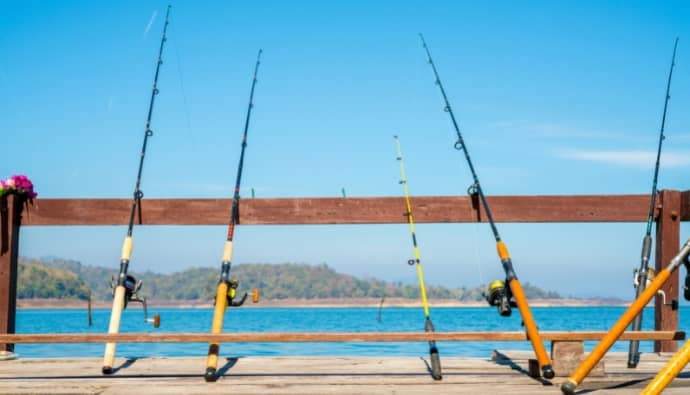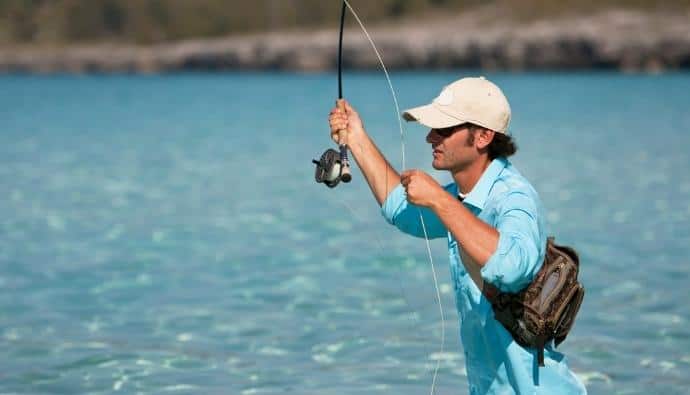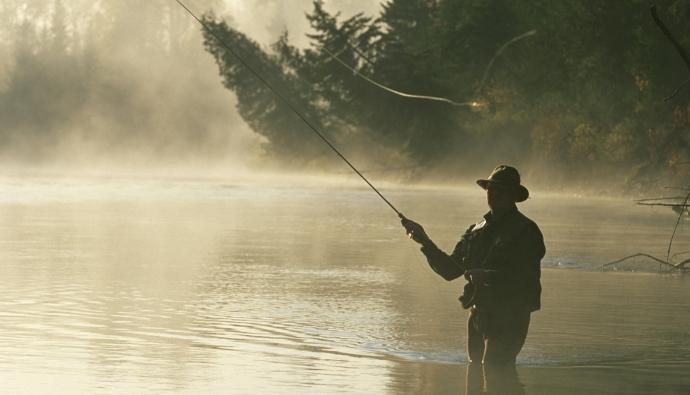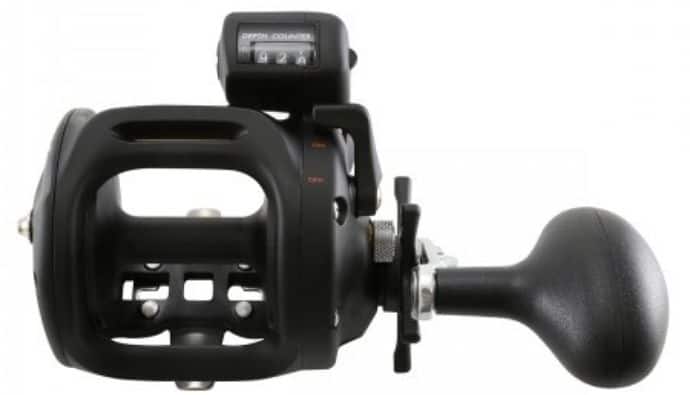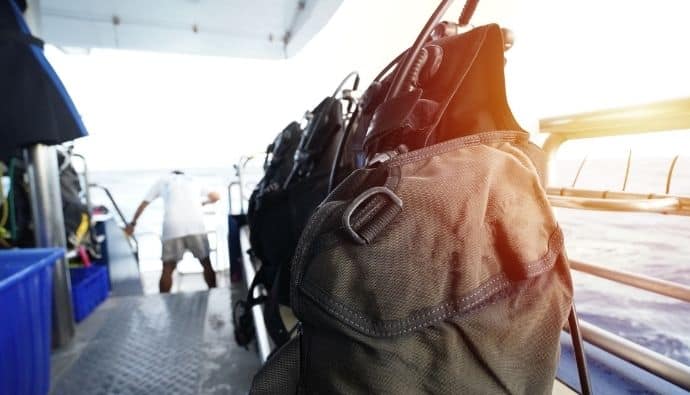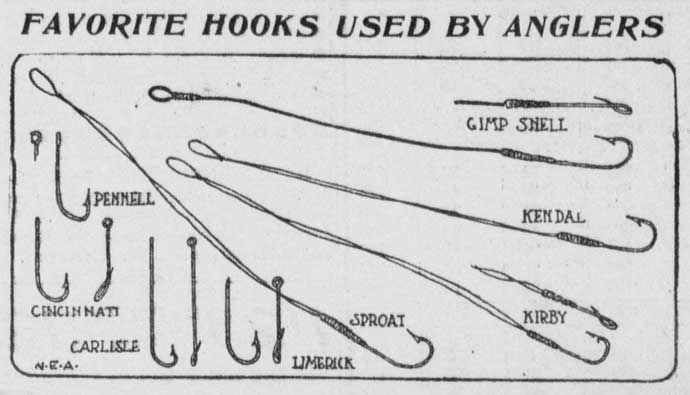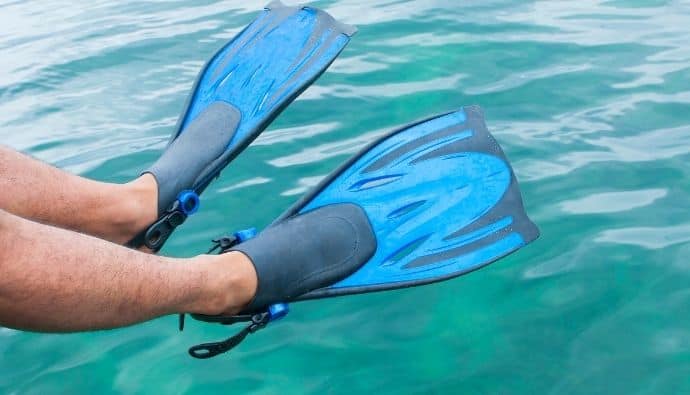Fly tying allows seasoned anglers to personalize their fishing experience and empower themselves to catch more fish.
It allows them to replicate their favorite bugs, but they can also make their own unique and versatile patterns. The only limit to the artistic side of fly fishing is your creativity, imagination, and the kit you get. Here are the best fly tying kits you can buy to make your fly fishing trip a success:
7 Best Fly Tying Kits for 2023 Reviewed
- Best Fly Tying Kit –WETFLY Deluxe Fly Tying Kit with Book and Dvd
- Best Fly Tying Kit for Beginners-Colorado Anglers Z797 Standard Tool Kit
- Dr Slick Fly Tying Tools Gift Set with Fly Box Combo
- Best Beginner Fly Tying Kit on a Budget
- Scientific Anglers Deluxe Fly Tying Kit
- Best Travel Fly Tying Kit-Loon Outdoors Fly Tying Tools Kit
- Fly Fishing Kit for Advanced Tying-Creative Angler-Wooden Fly Tying Station
1. WETFLY Deluxe Fly Tying Kit with Book and Dvd
Best Fly Tying Kit
The WETFLY fly tying supplies kit comes with a complete set of fly tying tools created from high-grade materials. The kit includes four hook sizes, hackle pliers, vise, and scissors, among other fly tying tools. The starter kit also comes with an instructional book and DVD that teaches you how to make your patterns.
We loved that the kit came with instruction manuals, but don’t expect to be impressed if you are a seasoned angler. This should make your list of fly fishing gifts for the angler in your family.
2. Colorado Anglers Z797 Standard Tool Kit
Best Fly Tying Kit for Beginners
This portable fly fishing kit has all the essential tools you need for fly tying. It comes with over eight tools, including a vise, bobbin, hackle pliers, scissors, threader, bodkin, and other essentials that can make your fly tying efforts clean and effortless.
It comes in a neat wooden case that is lightweight and easy to store.
This setup is one of the best fly fishing gifts out there for those who love to make things. However, it doesn’t come with instructions, so you are better off giving it to a seasoned pro who can use the tools.
3. Dr. Slick Fly Tying Tools Gift Set with Fly Box Combo
The Dr. Slick Fly Tying tools and kit is a perfectionist’s dream. Containing a foam lining in the fly box, the gift set undergoes a thorough inspection.
These essential tools were intended to emulate the quality surgical instruments but for fly tying and use on the water. The slick design makes it the perfect gift for loved ones.
Out of all the tools, the scissors stand out in the kit because they can be used to snip off the most minor pieces of material with pinpoint accuracy. However, the hackle plier could use some improvements.
4.Best Beginner Fly Tying Kit on a Budget
The Orvis Fly Tying accessories kit comes with a range of materials that you can use to create over 16 patterns and eight premium ones. It also comes with an instructional DVD you can use to make each one and brush up on your necessary skills. Some of the materials you can get with the kit include Hollow Egg, SOS Nymph, Fur Ant, and other favorites.
The kit comes in an attractive case that will keep all of your quality tools and materials in one place, but you may not get all of them in your order. That will depend on availability.
5. Scientific Anglers Deluxe Fly Tying Kit
The Scientific Anglers Deluxe Fly Tying Kit comes in a travel case that proves invaluable on fishing trips. The kit includes a sturdy starter vise that boasts a fixed-angle head as well as a c-clamp base along with other essential tools.
The fly tying kit also comes with a step-by-step instructional DVD aptly named ‘Introduction to Fly Tying’, which you can use to practice.
While it is an excellent kit for the price point, the materials are not high quality, so you may have to replace some once you get the hang of fly tying. It’d make a good fly fishing gift for someone exploring this new hobby.
6. Loon Outdoors Fly Tying Tools Kit
Best Travel Fly Tying Kit
Each of the seven quality tools in this fly kit is made from stainless steel, and all of them come with powder-coated yellow handles. The kit includes a dubbing brush, bobbin, bodkin, all-purpose scissors, arrow-pointed scissors, and a gator grip, to name a few.
The brand is known for making tools from eco-friendly materials that preserve lakes, rivers, streams, and oceans so that you can use this kit without worry.
Out of all the tools, we weren’t huge fans of the scissors, which could be sharper, but the attractive look of the kit stood out.
7. Creative Angler-Wooden Fly Tying Station
Fly Fishing Kit for Advanced Tying
This is a complete fly tying station and kit that any angler would love to have on hand during a fishing trip. It features a drawer that can hold all of your tools, a wooden deck where you can make your flies, and a super AA vise with over 11 devices, and it is beautiful to behold. In other words, you’ll spend more time tying flies and less time searching for the tools and materials you need.
While it looks gorgeous, we thought the wood could’ve been of a higher material for the price point. But it comes with all the essential tools and even a hair stacker that fly anglers need, so it is excellent for beginners.
The Tools You Need in Your Kit
If you’re getting into fly tying for the first time, it may seem daunting because of the sheer quantity of tools and materials involved. However, as a beginner, you only need a few basic ones to get started:
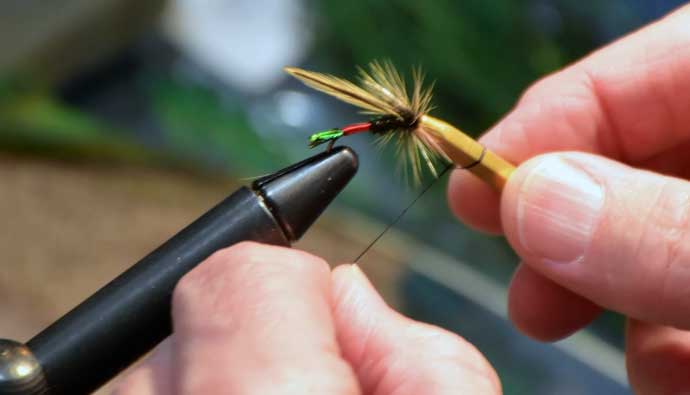
Essential Tools
Some of the necessary tools you will need include:
Bobbing Holder
This tool is used to hold thread so you can wind it around the hook shank.
Organizer
These are storage boxes, travel caddies, or kits explicitly designed to accommodate fly tying tools and materials.
Dubbing Twister
This tool is used to make neat and fast dubbing loops.
Vise
The vise is used to hold a hook securely as you tie flies. Some have a fixed head, while others come with a rotating one depending on use.
Scissors
Use scissors to make precision cuts in threads and other materials used to tie flies.
Whip Finisher
The whip finisher is used to tie off the final knot to complete a fly after you finish making it.
Bobbin
The thread used to tie flies winds and locks the material around the book. The bobbin holds it in place to be wound around the hook shank easily.
Hackle Pliers
This tool holds the feather’s stem in a tight grip during fly tying, which is otherwise impossible to do with fingers alone.
Bodkin Needle
This tool features an excellent point that proves invaluable for precision tasks in fly tying, such as glue and cement application.
Best Fly Tying Materials Kit
Muskoka MUS525
The Muskoka MUS525 fly tying kit comes packed with all of the materials any fly angler needs, along with a few options they don’t know they need. The jam-packed kit includes several color variations of Marabou and Hackle, a range of rare bird feathers such as the neck feathers of a peacock, and dubbing bags of rabbit hair and synthetic ice dubbing.
The kit offers excellent value for money and depending on how many times you tie flies, the equipment can last you for years or months. You will have to source the tools you need yourself, though.
Flies to Start With
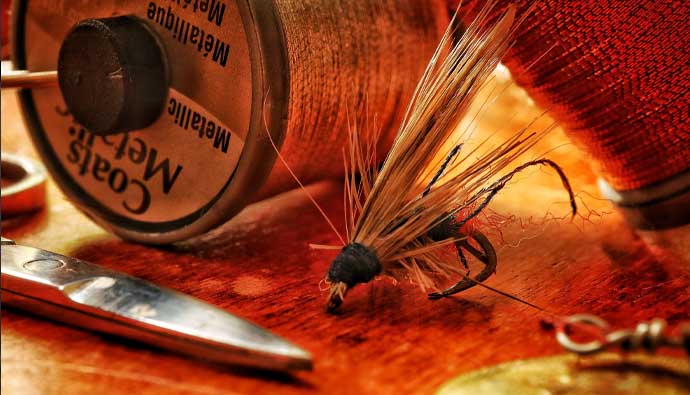
Basic fly tying kits are not complete without the following flies:
Woolly Bugger
One of the most popular flies, the Wooly Bugger, is in almost every fly kit for a reason. This artificial fly is a popular pattern used for both salt and freshwater fly fishing. It’s fished under the water’s surface and has a pulsating action that fish find irresistible.
Pheasant Tail Nymph
This mayfly imitator is dark brown and slim enough to skim across the water’s surface. It can be made with natural materials and mimics a range of bait species.
Elk Hair Caddis
This fly holds its own in turbulent waters because it has a hackle body that prevents it from going under. It skitters naturally across the surface, mimicking caddis that fish love. The elk and hackle wing of the fly also prevent it from getting soaked and submerged.
Eggs
Flies that are egg-patterned work well for steelhead, trout, and salmon, especially during their spawning season. That is the time of year when the fish is on the lookout for loose eggs from other fish in the water, which they can eat and get stronger from. These are heavy in protein and other nutrients, plus the eggs are easy prey.
Blue Wing Olive
This dry fly mimics common insects found on the surface, especially those that emerge between November and September. It works well in slow currents found along banks and is excellent for attracting trout.
The Stimulator
This fly is designed to imitate insects during specific moments in their particular life cycles and can be found in various colors. It is best fished on the surface of the water.
Frequently Asked Questions
Fly fishing is a particular type of fishing that uses artificial flies as bait. These are made to mimic baitfish, actual flies, and everything else in between that fish love to eat. It’s different from bait or lures fishing in casting since the line’s weight projects the fly rather than the lure’s or bait’s weight.
Just bend the arms of the bobbin till there is enough tension to hold the spool in place without the thread breaking off.
You need to follow a few simple steps to tie flies successfully. We will be using the Wooly Bugger in this example.
1. Secure the hook to the vise and make ten tight wraps with the lead wire.
2. Tie the tip of the saddle feather at the end of the hook and cut off the extra material.
3. Roll clumps around it a little at a time to add dubbing on the thread.
4. Take the dubbed thread to the eye of the hook to create a slim body.
5. Take hackle pliers and wrap the feather forward using evenly spaced turns.
6. Make sure the feather is secure at the eye of the hook before cutting off the extra material.
7. Cut off some elk hair and place them tip down in the hair stacker. When you remove it, make sure the hair is even.
8. Hold the hair at the top of the fly using your thumb and forefinger, and align the tips to ensure they line up with the bend of the hook. Use your other hand to secure the hair in place with thread.
9. Pull the thread to make the hair flair and trim off the butt ends before tying it off with the whip finish tool.
The essential tools to tie flies include a vise, scissors, a bobbin, dubbing, a hair stacker, a whip finisher, UV light, glue, lubricant, and hackle pliers.
Fly patterns are broken down into four categories, namely:
1. Search patterns – These flies imitate a range of insects.
2. Impressionistic patterns – These flies mimic a few insects closely.
3. Attractor patterns – These flies don’t imitate an insect, but they are still attractive to fish.
4. Imitative patterns – These flies mimic one specific insect closely.
A dry fly is one that can float on the surface of the water. These are designed to represent flies that have freshly hatched. Most of them feature dull colors and jiggly legs.
This is a lanyard that can be clipped onto a vest or bag and is meant to keep your tools safe while you are fishing.
Insider Advice
As the seasons change, so should the type of flies you use. That’s because you want to make sure that the ones you have mimic the physical flies and insects present in that particular period—research which insects hatch during which seasons or months and when they hatch.
To choose the right flies, you need to know what the fish you want to catch prefers to eat and make ones that imitate it. You may have to take a couple of fly tying kits and tools with you to have a range of materials to work with. So many people focus on the right fly rod, reels, and even fly boxes when they should be focusing on matching the hatch.
The bottom line is that if you can learn more about bugs, and how they behave and match them with your kit, you can become a master fly selector.
Differences in the areas you should fish in will determine which type you will ultimately use, but don’t be disheartened if you don’t get the hang of it right away.
Accurate fly selection takes time initially as you familiarize yourself with the different varieties and how they can be used in specific seasons and times of the day. The tools you need may also increase in number as you gain experience.




 Facebook
Facebook YouTube
YouTube
